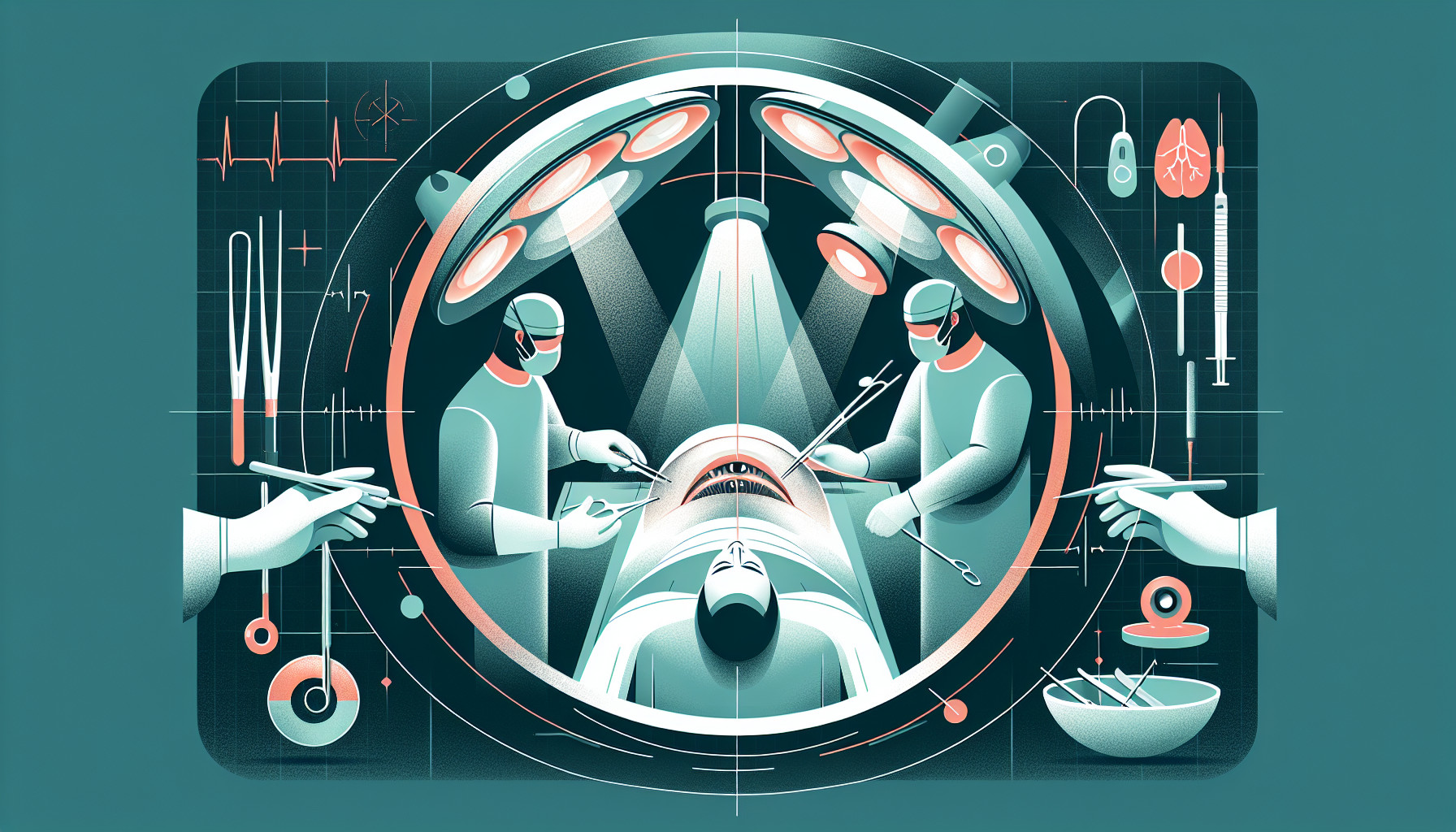Our Summary
This research paper discusses how to effectively identify and manage ocular surface disease (OSD), a condition that affects the surface of the eye, before, during, and after cataract surgery. It highlights that cataract surgery and OSD are closely linked; the surgery can cause or worsen OSD symptoms, and OSD can negatively affect the results of the surgery and increase the risk of complications after the operation. The paper stresses the importance of improving the health and stability of the eye’s surface to enhance the results after cataract surgery and avoid complications. This is particularly crucial for patients with severe OSD, but also for those with minimal signs or symptoms. The key to improving these patients’ quality of life is an accurate diagnosis and a carefully considered, step-by-step approach to treatment.
FAQs
- How does ocular surface disease (OSD) impact cataract surgery outcomes?
- What are some strategies to manage ocular surface disease before, during, and after cataract surgery?
- How can improving the health and stability of the ocular surface enhance post-cataract surgery outcomes?
Doctor’s Tip
One helpful tip a doctor might tell a patient about cataract surgery is to properly manage any ocular surface disease (OSD) before, during, and after the surgery. This can help improve surgical outcomes and reduce the risk of complications. Patients should work with their doctor to identify and treat any OSD symptoms, which can include dryness, irritation, and inflammation. Using lubricating eye drops, following a proper eye hygiene routine, and seeking treatment for any underlying conditions can help optimize the health of the ocular surface and improve the overall success of the cataract surgery.
Suitable For
Patients who are typically recommended for cataract surgery include those who have:
- Significant visual impairment due to cataracts
- Difficulty with daily activities such as reading, driving, or seeing faces clearly
- Glare sensitivity or difficulty seeing in low light conditions
- Cataracts affecting both eyes
It is important for patients with ocular surface disease (OSD) to be carefully evaluated before undergoing cataract surgery, as OSD can impact surgical outcomes and increase the risk of complications. Patients with OSD may experience symptoms such as dryness, redness, irritation, and blurred vision, which can worsen following cataract surgery.
Therefore, it is essential for patients with OSD to have their condition properly managed before, during, and after cataract surgery to ensure optimal visual outcomes and reduce the risk of complications. Improving the health and stability of the ocular surface is key in enhancing post-surgery results and improving the quality of life for these patients. A correct diagnosis and a stepwise approach to managing OSD are crucial in ensuring successful cataract surgery outcomes for patients with this condition.
Timeline
Before cataract surgery:
- Patient undergoes a comprehensive eye exam to determine the presence of cataracts and assess overall eye health
- Patient may experience symptoms of blurry vision, glare, and difficulty with night vision
- Ocular surface disease may be identified and managed to optimize surgical outcomes
During cataract surgery:
- Surgeon removes the cloudy lens and replaces it with an artificial intraocular lens
- Ocular surface disease may be exacerbated during surgery, leading to dry eye symptoms and discomfort
- Surgeon may take steps to minimize dry eye symptoms during and after surgery
After cataract surgery:
- Patient may experience improved vision and reduced symptoms of cataracts
- Ocular surface disease may persist or worsen after surgery, impacting visual outcomes and causing discomfort
- Patient may need to continue managing ocular surface disease post-surgery to optimize visual outcomes and prevent complications.
What to Ask Your Doctor
Some questions a patient should ask their doctor about cataract surgery and ocular surface disease management include:
- How will my ocular surface disease affect my cataract surgery outcome?
- What steps can be taken to manage my ocular surface disease before, during, and after cataract surgery?
- Will my current medications for ocular surface disease need to be adjusted or stopped before surgery?
- What are the potential complications of cataract surgery in patients with ocular surface disease?
- How can I improve the health and stability of my ocular surface to enhance post-surgery outcomes?
- Are there any specific post-operative care instructions or treatments I should follow to prevent exacerbation of my ocular surface disease?
- How will you monitor and manage my ocular surface disease after cataract surgery to ensure optimal outcomes?
- Are there any lifestyle changes or additional treatments I should consider to improve my ocular surface health before and after surgery?
Reference
Authors: Sarnicola E, Sarnicola C, De Bernardo M, Rosa N, Sarnicola V. Journal: Curr Opin Ophthalmol. 2024 Mar 1;35(2):155-162. doi: 10.1097/ICU.0000000000001024. Epub 2023 Nov 27. PMID: 38018802
